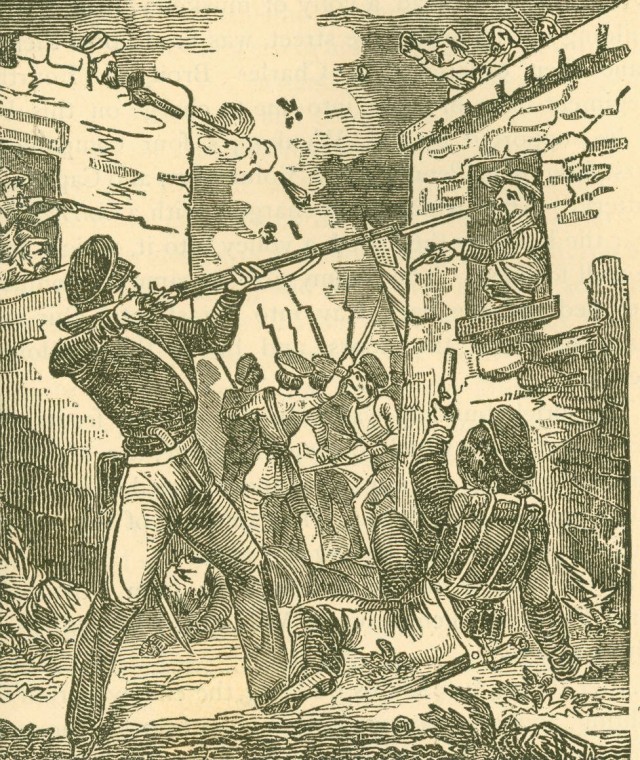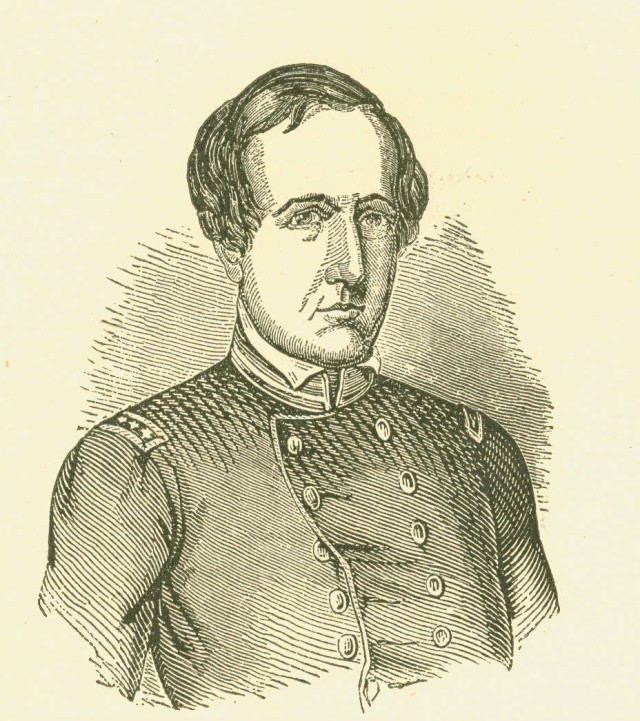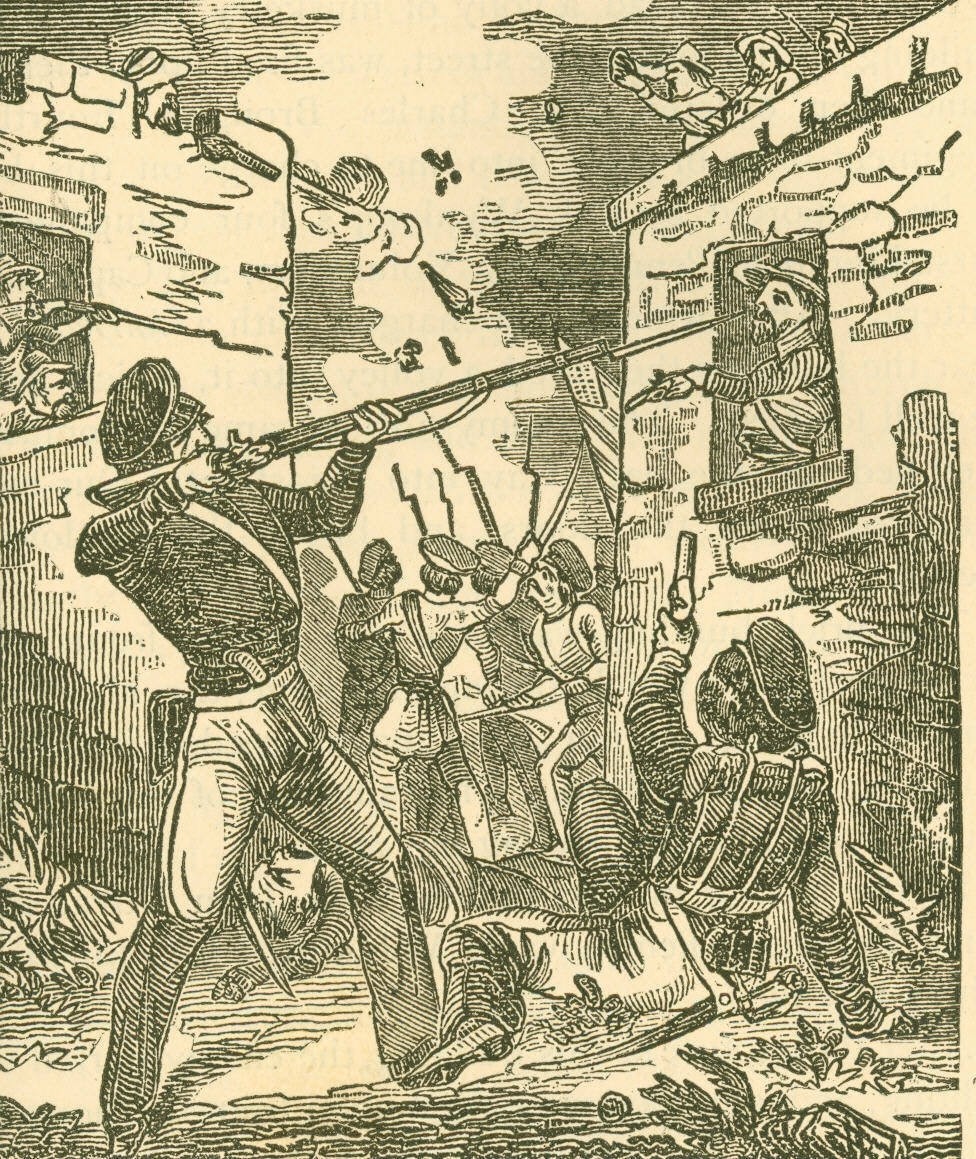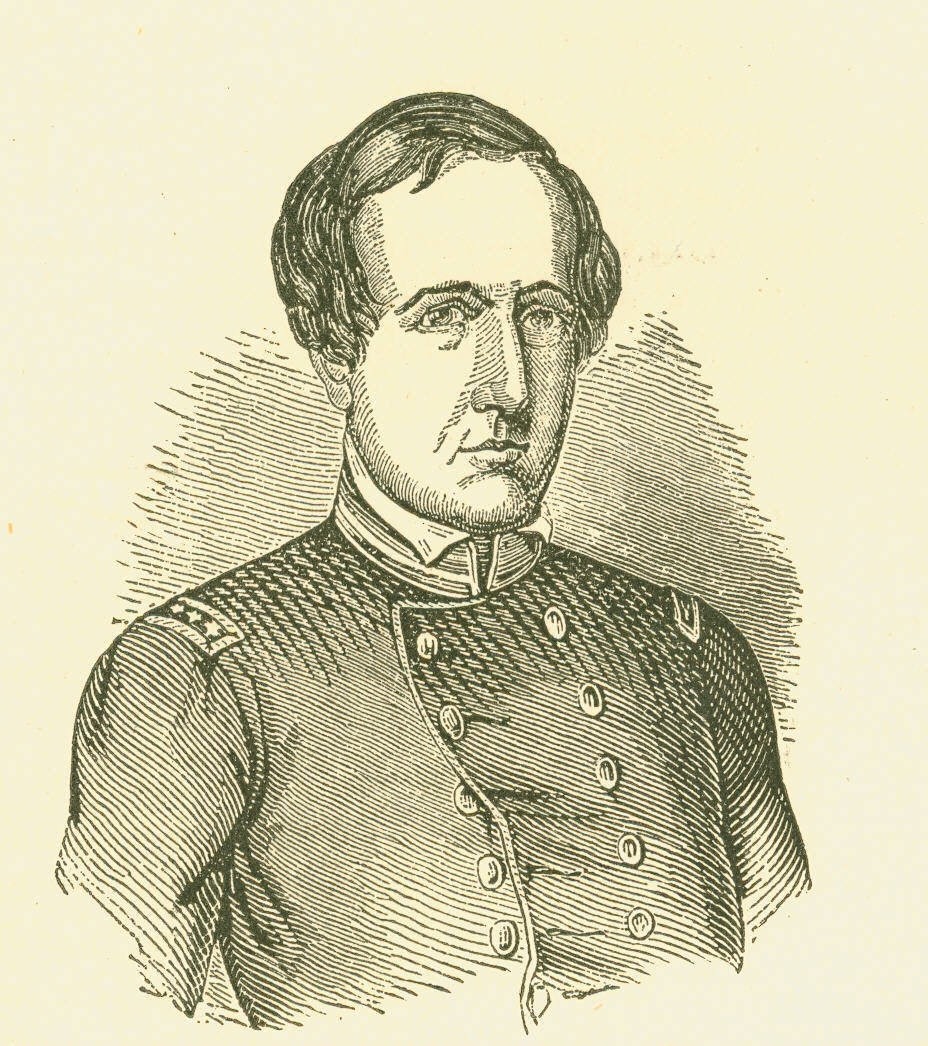Towards the late summer of 1847 General Winfield Scott prepared his army for its final push toward Mexico City. Some 1800 sick and convalescing soldiers were left behind in the city of Puebla under command of Brevet Colonel Thomas Childs, 1st U.S. Artillery. His garrison of 247 men consisted of companies A, C, D, G, I and K of the 1st Pennsylvania Volunteers. Also included were one company each from the 2nd and 4th U.S. Artillery Regiments, and Captain Lemuel Ford's company of the 3rd U.S. Dragoons.
Childs chose to establish his defenses at three key locations in the city: Fort Loreto, a solid stone structure, and Guadalupe, a church protected by an earthen wall and ditch, both upon a ridge on the north. The Cuartel de San Jose [barracks] was located in the northeast and included a large walled-in area to protect the livestock. San Jose also served as the site of Childs' headquarters and the chief hospital.
Relations with the populace had generally been good from the beginning, and included economic as well as social interaction, and the vast majority of the citizens desired no trouble with the U.S. soldiers. No sooner had the last of Scott's main army moved out on August 10, however, than the atmosphere took a drastic turn. Mexican General Joaquin Rea quickly sent his guerillas into the city to try to stir up the populace and generally to try to intimidate the garrison. Several teamsters on a supply mission were attacked on August 12. Two days later the Americans began a massive effort to further fortify the three locations. Suddenly the U.S. garrison found itself under a siege that would last for the next 59 days, accompanied by almost constant sniping and harassing fire.
A large body of guerillas successfully raided a livestock enclosure on the 26th
and made off with a number of mules. About 30 mounted volunteers gave chase.
The enemy continued to draw the volunteers further and further away until about 300 Mexican lancers attacked them in the flank. About half the group of Americans were either killed or captured. Sporadic firing filled each day, as rumors of impending assaults multiplied. On the night of September 13, General Rea brought several thousand Mexican troops into the city, and on the 16th he demanded Colonel Childs' surrender. Upon Childs' refusal a large body of lancers made an unsuccessful attack on San Jose. U.S. morale received a huge boost on the 22nd, when the pro-American Mexican Spy Company brought in word that Scott had captured Mexico City. The same afternoon Santa Anna arrived, bringing with him the army that had just evacuated the capital.. These Mexicans took heavy casualties when they made attacks on Guadalupe during the 23rd and 24th. Santa Anna repeated the demand for surrender on the 25th but to no avail. The Mexicans then began constructing breastworks which nightly inched closer to the forts. The Americans launched several forays which successfully countered this threat in late September and early October, after which General Rea again assumed Mexican command. On October 8, the Roman Catholic Bishop of Puebla died in his residence, and the Mexicans requested a cease fire to begin on the 10th. Colonel Childs agreed, cautioning his troops to strictly observe it, even though there were numerous breaches by the enemy.
At about 1:00 p.m. on October 12, General Joseph Lane's relief column entered
Puebla, and the enemy rapidly withdrew. In short order the city was pacified, and
excellent relations with the populace were quickly restored. The bravery, ingenuity and
persistence exhibited in Puebla in 1847 continues strong in the U.S. Army 161 years
later.
Editor's Note: Our Guest Contributor, Randy Hackenberg, is a retired member of the USAMHI staff. A renouned historian and photograph curator, he is a scholar of the role of Pennsylvania solders serving in the Mexican-American War.
Related Links:
A Working Bibliography of MHI Sources: MEXICAN WAR BATTLES/PLACES, 1846-48.
A Working Bibliography of MHI Sources : MEXICAN WAR OVERVIEW, 1846-48.




Social Sharing